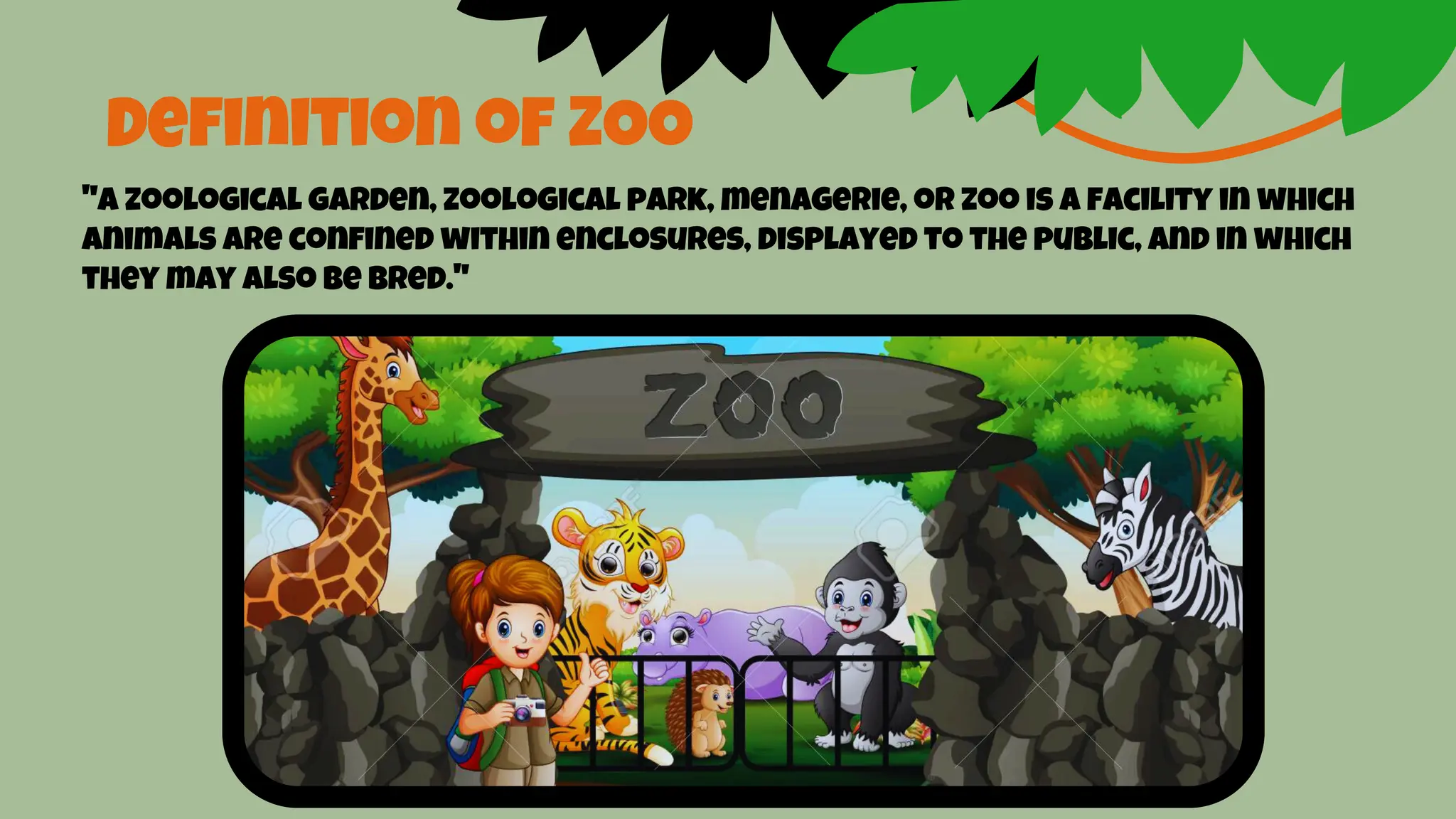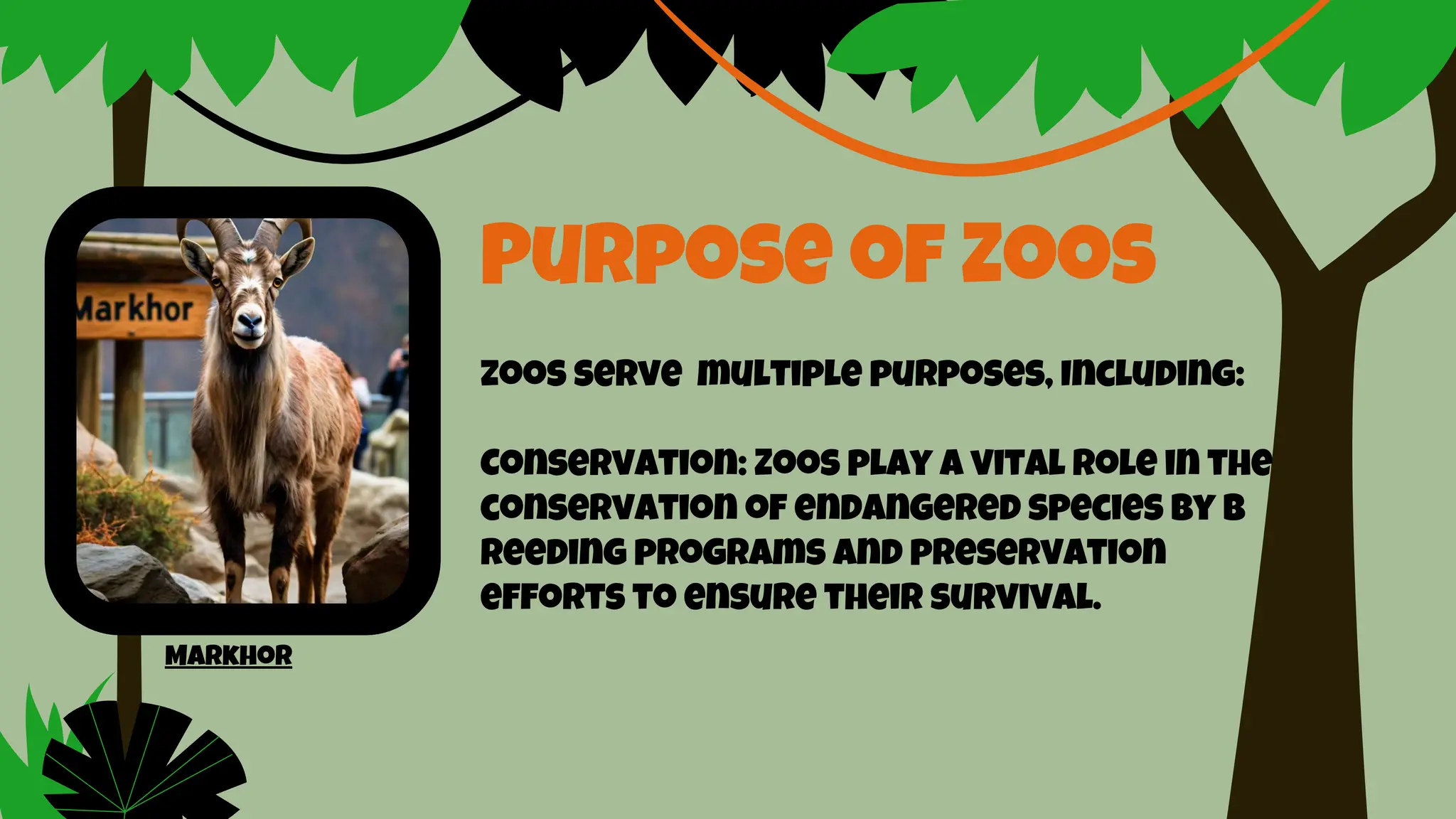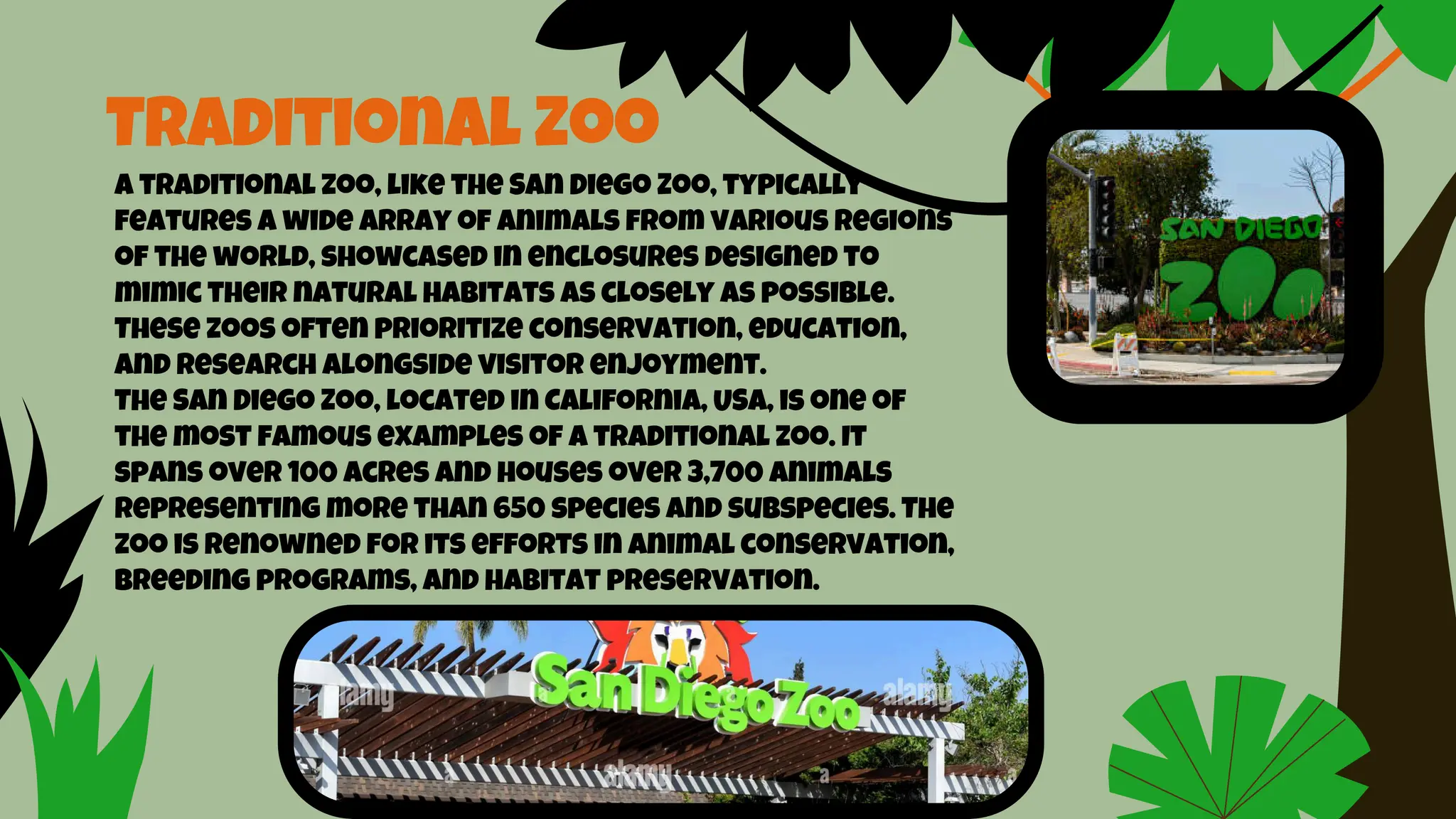The document provides an overview of zoos, their purposes, types, and features. It categorizes zoos into traditional zoos, roadside zoos, petting zoos, safari parks, aquariums, and aviaries, detailing their roles in conservation, education, and entertainment. Each type of zoo has distinct characteristics, such as the size, animal variety, and focus on visitor interaction or welfare.


























